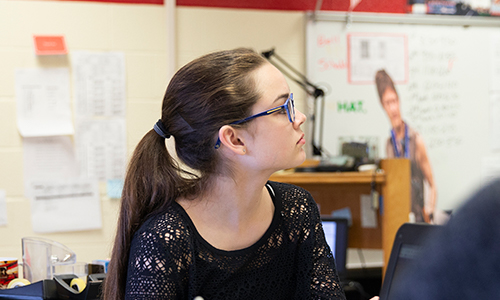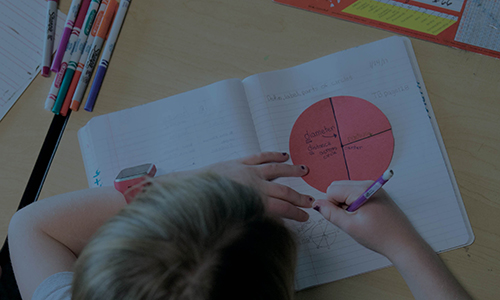Research brief
Identifying students who are off-track academically in ninth grade – the role of social-emotional learning trajectories
2019
By: James Soland, Megan Kuhfeld

Description
Do students’ social-emotional learning (SEL) skills in middle school predict being off-track to graduate high school?
View research briefAssociated Research
Related Topics


Typical learning for whom? Guidelines for selecting benchmarks to calculate months of learning
To describe the impact of the COVID-19 pandemic on students, researchers have translated test scores into months of learning to claim how many months/years students are behind in school. Despite its perceived accessibility, there are major downsides to this translation. To inform future uses by researchers and media, we discuss in this brief how to calculate this metric as well as its trade-offs.
By: Megan Kuhfeld, Melissa Diliberti, Andrew McEachin, Jon Schweig, Louis T. Mariano
Topics: COVID-19 & schools, Equity, Growth, Growth modeling, Seasonal learning patterns & summer loss


The purpose of this technical appendix is to share more detailed results and to describe more fully the sample and methods used in the research included in the brief, Learning during COVID-19: An update on student achievement and growth at the start of the 2021-22 school year. We investigated two research questions:
- How does student achievement in fall 2021 compare to pre-pandemic levels (namely fall 2019)?
- How did academic gains between fall 2019 and fall 2021 compare to normative growth expectations?
By: Megan Kuhfeld, Karyn Lewis
Topics: COVID-19 & schools, Equity, Growth modeling


To what extent has the COVID-19 pandemic affected student achievement and growth in reading and math, and which students have been most affected? Using data from 6 million students in grades 3-8 who took MAP Growth assessments in reading and math, this brief examines how gains across the pandemic (fall 2019 to fall 2021) and student achievement in fall 2021 compare to pre-pandemic trends. This research provides insight to leaders working to support recovery.
By: Karyn Lewis, Megan Kuhfeld
Topics: COVID-19 & schools, Equity, Growth modeling


The American Rescue Plan provides $122 billion for COVID recovery in schools. With more than 40 state plans approved, how are districts collecting, monitoring, reporting and learning from the unprecedented interventions? What can districts do now to design and implement data collection processes that will shape collective learning? In this webinar, you will hear how district leaders and researchers are approaching this opportunity to alter life outcomes for generations.
By: David Brackett, Jacob Cortez, Dan Goldhaber, Emily Morton
Topics: COVID-19 & schools, High-growth schools & practices, Informing instruction


This study examined the stability of social-emotional learning (SEL) skills and the extent to which students’ initial level in SEL skills in 6th grade and growth in SEL skills from 6th to 8th grade are related to students’ successful transition to secondary school. Findings suggest that understanding how a student develops social-emotionally can improve identification of students not on track to succeed in high school.
By: James Soland, Megan Kuhfeld
Topics: Social-emotional learning, High school, Middle school


The forgotten 20 percent: Achievement and growth in rural schools across the nation
Using achievement data from fall and spring of grades K-8 for 840,000 students in 8,800 public schools, this study provides novel evidence on how achievement and growth differ between rural and nonrural schools. Rural students start kindergarten slightly ahead of nonrural students but fall behind by middle school. The divergence is driven by larger summer losses for rural students. In both rural and nonrural schools, Black–White achievement gaps widen during the school year.
By: Angela Johnson, Megan Kuhfeld, James Soland
Topics: Equity, Growth modeling, Seasonal learning patterns & summer loss


Predictors and consequences of school mobility in middle childhood
This study examined family factors associated with school mobility and if either a move during the previous year or cumulative moves across elementary school were related to child functioning. School mobility during elementary school did not appear to be a pervasive risk although the authors were unable to study very high rates of school mobility because of very small sample sizes.
By: Deborah Lowe Vandell, Megan Kuhfeld, Elizabeth Gershoff, Robert Crosnoe
Topics: Middle school, Social-emotional learning



